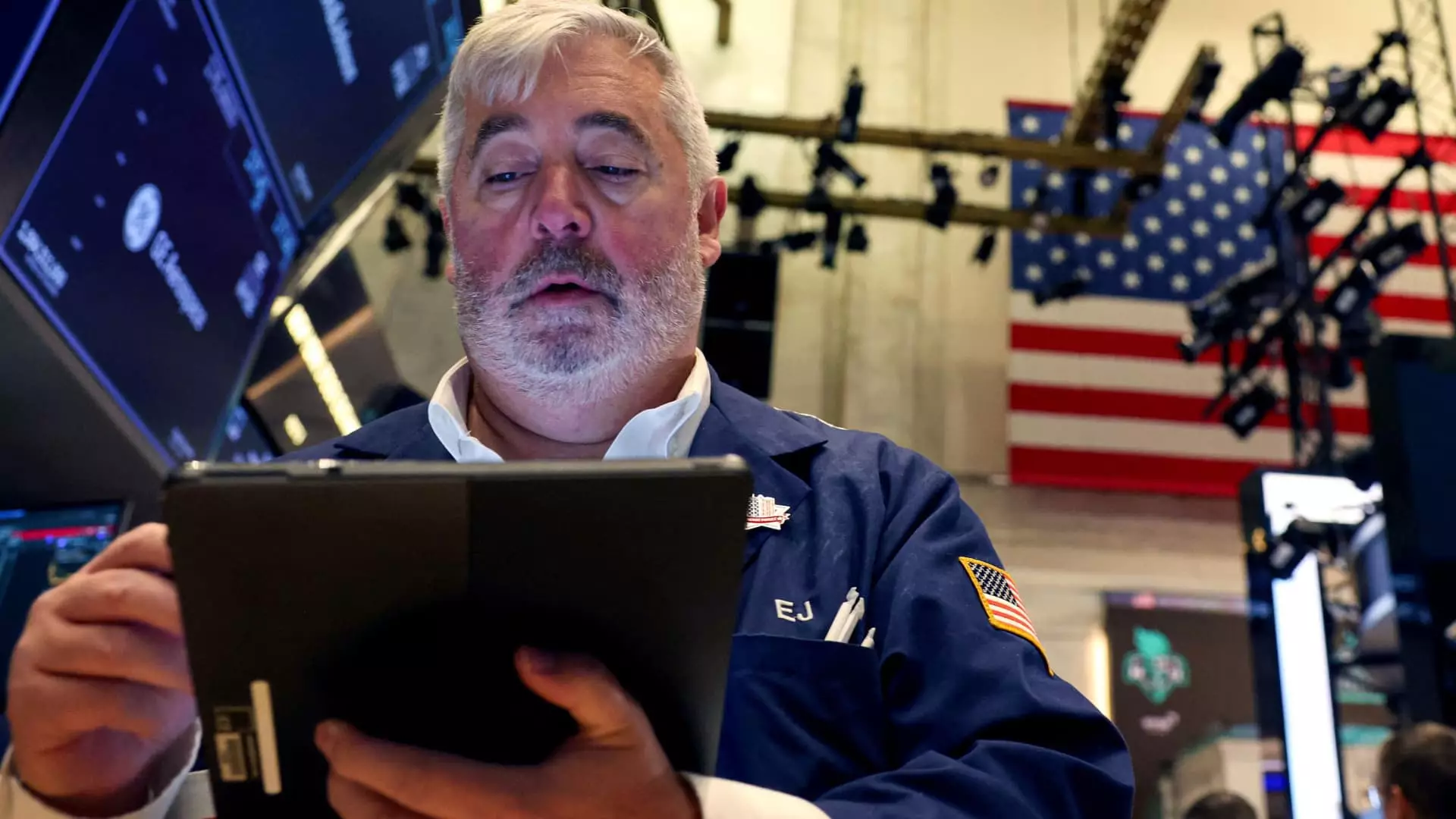Political events and their consequences on economic indicators can provoke significant market reactions. Recent overnight trading has illustrated how closely intertwined treasury yields are with presidential elections—highlighting a cycle of speculation, investor sentiment, and market dynamics. The ongoing presidential race between Vice President Kamala Harris and former President Donald Trump serves as an exemplar of this phenomenon, underlining how political uncertainty can catalyze fluctuations in treasury yields.
In the wake of early election results, treasury yields surged noticeably. Specifically, the 10-year Treasury yield experienced a notable increase of 14 basis points, shooting up to 4.431%, which marks its peak since early July. Similarly, the 2-year Treasury yield rose by 8 basis points to 4.285%, achieving levels not seen since the end of July. This abrupt rise in yields reflects traders’ speculative nature as they respond to early electoral outcomes, particularly as returns seemed to favor Trump. Such fluctuations illustrate the inverted relationship between yields and prices, where bond prices decrease as yields rise.
Market forecasters were animated by projections indicating that Republicans could potentially reclaim control of the Senate post-election. Notably, NBC News designated crucial victories for Trump in states like North Carolina and Georgia, while critical battlegrounds such as Pennsylvania remained contentious. This uncertainty fueled speculation that should a Trump victory materialize—especially accompanied by a Republican controlled Congress—yields could undergo significant increases. Investors anticipate that such political configurations could pave the way for fiscal policies fostering tax cuts and increased tariffs, both of which could contribute to a widening fiscal deficit and a resurgence of inflationary pressures.
Investor Sentiment and the Forecast for Treasury Yields
Expert opinions, such as those articulated by Jeremy Siegel, a finance professor at Wharton, suggest that a Republican clean sweep could spell trouble for the bond market. Siegel noted, “If there’s a Republican sweep of House, Senate and the presidency, I expect the bond market to be wobbly.” His remark echoes a broader market sentiment where investors may seek higher yields as a protective measure against increased debt issuance, driven by unrestrained government spending plans anticipated from either candidate.
Indeed, the campaign rhetoric from both Trump and Harris provided little assurance regarding fiscal responsibility. Instead, both candidates proposed trajectories of unresolved spending obligations, raising alarms among investors about rising yields as a necessary risk premium. Byron Anderson, head of fixed income at Laffer Tengler Investments, pointedly remarked, “Bonds are selling off across the yield curve massively as the Trump trade gets applied again.” Such sentiment serves as a clear reflection of market readiness to adapt swiftly to evolving narratives stemming from presidential outcomes.
Analysts are already speculating the possible trajectories of treasury yields diverging based on election results. Stephanie Roth, chief economist at Wolfe Research, estimates that a Trump win may push the 10-year yield closer to 4.5%, while a Harris administration might send it tumbling towards 4%. This anticipated volatility speaks to the broader implications of having a divided Congress—suggesting that political gridlock, irrespective of the winning presidential candidate, could moderate yield increases. Such complex interplay drives markets to see a divided Congress as a favorable outcome, allowing for checks and balances that could prevent extreme fiscal policies from being enacted.
October’s trading results corroborate this heightened volatility, with the benchmark 10-year Treasury yield experiencing its largest monthly uptick since September 2022, positioned at a remarkable surge of 50 basis points. With the Federal Reserve poised to reconsider interest rates, expectations are aligned toward a modest reduction of a quarter point, further influencing market dynamics.
As the markets grapple with the immediate implications of the election outcome, investors remain acutely aware of how political decisions can shape economic landscapes. Treasury yields will continue to act as barometers of investor sentiment and fiscal responsibility, providing a preview of the broader economic trajectory. The intertwinement of politics and economic forecasting underscores the importance of staying informed and responsive to the evolving political landscape—a lesson avidly adopted by market participants in times of political uncertainty.

